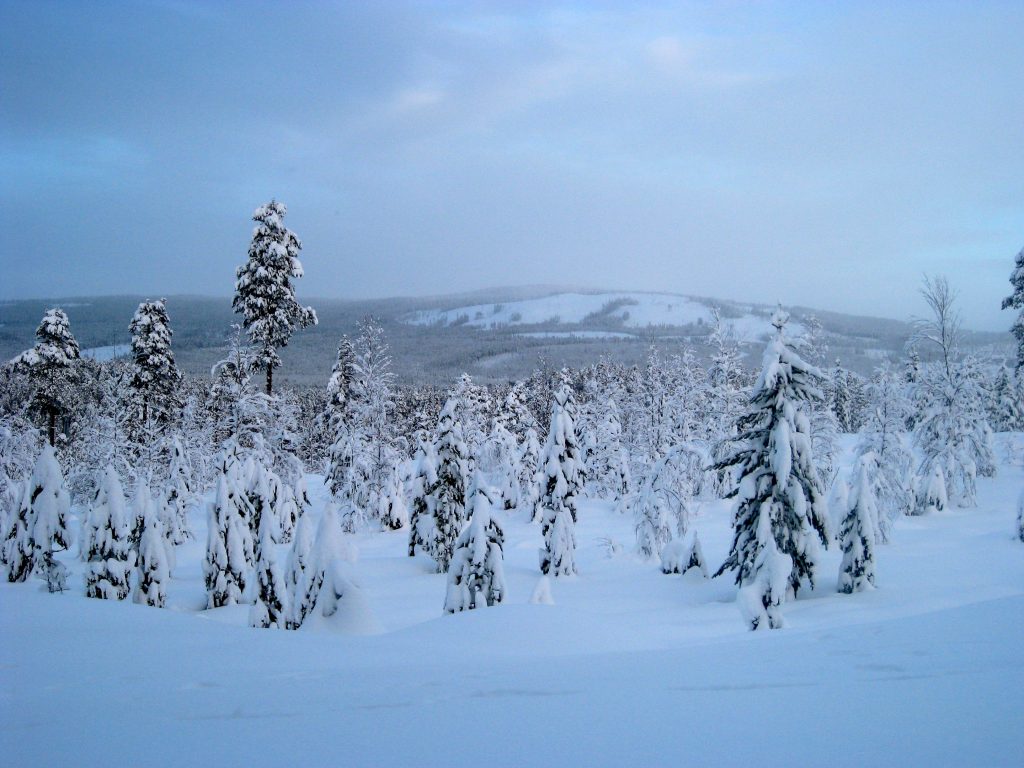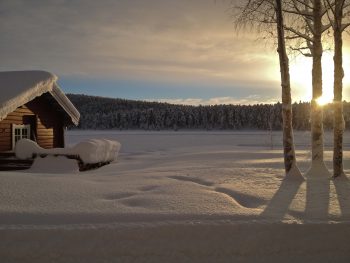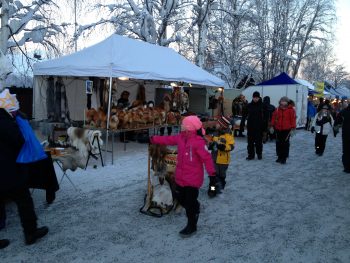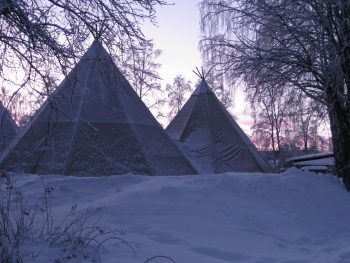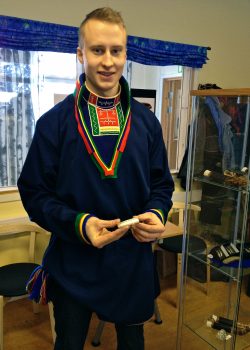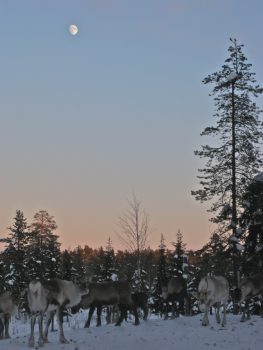Jokkmokk’s Winter Market in its 415th Year Posted by Chelsea B on Jan 28, 2020 in Culture
Sitting just above the arctic circle in Northern Sweden, Jokkmokk is much more than just a quaint little town. It has a huge significance for the living history of the Sámi people, and each year, hosts a Winter Market that draws around 40,000 people. In this blog post, we’ll learn a bit about the history of the market and I’ll share my tips for a successful market visit!
First, the Sámi are the indigenous people of Northern Scandinavia. The geographic area where most Sámi folks live is called Sápmi, and spans from northern Norway across Sweden, Finland, and into the Kola Peninsula of Russia. Sámi people are historically a nomadic culture, often associated with reindeer herding, and fishing communities on the coasts. For a more robust introduction of the Sámi, see samer.se.
Before modern times, people traveled from all over Sápmi to Jokkmokk for trade and companionship during dark winter months. This market is also linked to the Swedish states’s colonizing of the north in the 1600’s, when the government saw the gathering as a convenient place to begin taxing and imposing Christianity on the Sámi.
As I mentioned in the intro, Jåhkåmåhke máranána / Jokkmokks marknad / Jokkmokk’s Market is in its 415th year, and this year’s theme is Arctic Design. The official market dates are Feb. 5-7 but events happen in the days leading up to the opening ceremony, held on Wednesday evening each year. The market itself hosts hundreds of vendors selling traditionally-traded items like reindeer skins, preserved foods, textiles, and handcrafts, but also more modern “must-have” festival goods like candy, t-shirts with funny sayings, and “as-seen-on-tv” vendors. Venues host free and ticketed film screenings, concerts, theater performances, artists exhibitions.
From Jokkmokk Market’s website:
“Vi ser fram emot tre intensiva dagar med ett stort utbud av både varor och evenemang. På marknaden finns det, precis som alltid, någonting för alla. Människor och möten som ger dig minnen för livet.
We look forward to 3 intense days with a wide selection of both goods and events. In the market, as always, there is something for everyone. People and meetings that give you memories for life.”
I have been lucky enough to experience life in Jokkmokk, over a period of 5 weeks, once in 2009, and once in 2013 staying at Samernas Utbildningcetrum, the Center for Sámi Education. This is a fantastic place where young Sámi adults live on campus and take courses in reindeer husbandry, handcraft, cooking, language, history, among other subjects.
- The Lake Dálvadis in Jokkmokk
- Jokkmokk Market
- Lavvu at Jokkmokk Market
- Jesper Eriksson selling his antler bracelets
- Reindeer Sunset
- Sápmi Flag: Ájtte Museum
Interested in paying a visit to Jokkmokk’s Winter Market? Here are a few of my tips for getting the most out of your time there:
Plan ahead because there is a lot to see and do! Dog sledding, concerts, and dinner reservations, and a few things that sell-out early. Use the official event schedule to highlight that year’s standout events. Book housing WAY ahead of time. Do leave some space for improvisation too, you never know what may interest you once you arrive.
Bundle up: dress for the weather! It’s often one of the coldest weekends of the year. Thermals, wool socks, insulated pants, and something to cover your face is key!
Visit Ájtte Museum as soon as possible to set a great context you visit. It has fantastic exhibitions about the history and future of the land and people in this region.
Support Samernas: eat some moose chili or smoked reindeer meat for lunch at the school’s café. Go to exhibits and events hosted there, and buy art from students and other exhibiting artists. Visit the elementary school too for some light fika and art made by the super sweet younger students.
Support Sámi designers and artisans: visit design store Stoorstålka, and the Sameslöjdstiftelsen Sámi Duodji store for genuine art and design made by indigenous practitioners. Avoid purchasing ceremonial wear, if you don’t identify as Sámi yourself.
And most importantly, be mindful, it makes for a better experience for you and others! You are entering space that is very tourist-friendly but also very culturally significant, so be respectful. Do you research, and respect spaces held for Sámi people. This market is certainly not without its cultural appropriation, so think twice before you buy something replicating Sámi designs. Use the resources I’ve mentioned above to help you with this, and remember that it’s okay to ask questions if you’re feeling unsure.
Next week, I’ll do a post on Sámi music, covering modern sounds and feature traditional joik. See you then!

Build vocabulary, practice pronunciation, and more with Transparent Language Online. Available anytime, anywhere, on any device.



